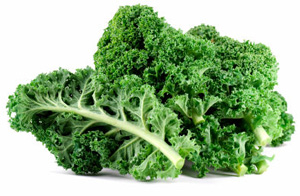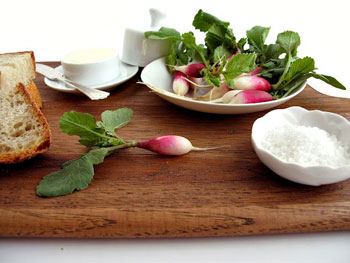 We had a moment the other night, a unique event in the long history of the Tucker-Eikenberry alliance.
We had a moment the other night, a unique event in the long history of the Tucker-Eikenberry alliance.
We had kale for dinner – just kale. That was dinner. It was an odd night, which could be said about a lot of nights these days. Our social engagement was a 5:00 to 7:00 kind of thing and we found ourselves back at the apartment around 7:30, our night done, with neither of us a thought in our head as to what to do next.
We didn’t want to go out again – although I heroically offered run up to the Peace Food Café on Amsterdam, Jill’s home away from home, for some take-out. “No,” she said. I’ll make some kale from Alison’s recipe.”
“You’ll make?” I thought. This whole thing of Jill’s cooking is very new. There’s lots of territorial shit going down right now in the kitchen.

 These mini mint puddings sprout to life with their mint seedling growing out the top and ground-cookie dirt sprinkled on the surface.
These mini mint puddings sprout to life with their mint seedling growing out the top and ground-cookie dirt sprinkled on the surface. Many vegetables take the spring spotlight: asparagus, fresh peas, and fava beans, among others. And then there a few humbler ones that fall to the wayside, like small bright-red radishes.
Many vegetables take the spring spotlight: asparagus, fresh peas, and fava beans, among others. And then there a few humbler ones that fall to the wayside, like small bright-red radishes. Onions have their place. I wouldn't dream of starting a marinara sauce without sauteed shallots. Nearly every soup I make starts with sauteed brown onions. Red onions enliven fruit salsas, and scallions add depth to guacamole. And let's face it, a bratwurst without grilled Vidalia onions is a crime.
Onions have their place. I wouldn't dream of starting a marinara sauce without sauteed shallots. Nearly every soup I make starts with sauteed brown onions. Red onions enliven fruit salsas, and scallions add depth to guacamole. And let's face it, a bratwurst without grilled Vidalia onions is a crime. This really isn't a recipe—it doesn't even involve cooking or assembly. It's just a few simple ingredients brought together in a perfect way: radishes, butter, and salt. Most people don't give radishes a second thought mainly because they don't eat them. As I've shown in recipes before and will show this week, radishes can be made into many different dishes with ones that are even cooked. But the absolute best way to eat them is with just a little salt and butter.
This really isn't a recipe—it doesn't even involve cooking or assembly. It's just a few simple ingredients brought together in a perfect way: radishes, butter, and salt. Most people don't give radishes a second thought mainly because they don't eat them. As I've shown in recipes before and will show this week, radishes can be made into many different dishes with ones that are even cooked. But the absolute best way to eat them is with just a little salt and butter.

